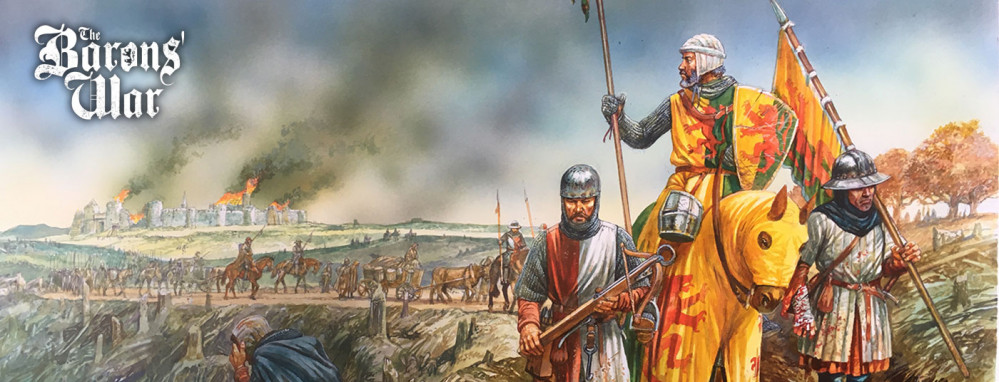
PanzerKaput Goes To Barons' War
Abbey of Saint Mary de Pratis and the Militis Christi
The Abbey of Saint Mary de Pratis, more commonly known as Leicester Abbey, was an Augustinian religious house in the city of Leicester, in the East Midlands of England. The abbey was founded in the 12th century by the Robert de Beaumont, 2nd Earl of Leicester, and grew to become the wealthiest religious establishment within Leicestershire. Through patronage and donations the abbey gained the advowsons of countless churches throughout England, and acquired a considerable amount of land, and several manorial lordships. Leicester Abbey also maintained a cell (a small dependent daughter house) at Cockerham Priory, in Lancashire. The Abbey’s prosperity was boosted through the passage of special privileges by both the English Kings and the Pope. These included an exemption from sending representatives to parliament and from paying tithe on certain land and livestock.
History
Leicester Abbey was founded during a wave of monastic enthusiasm that swept through western Christendom in the 11th and 12th centuries. This wave was responsible for the foundation of the majority of England’s monasteries, and very few were founded after the 13th century. These monasteries were often founded by a wealthy aristocratic benefactor who endowed and patronised the establishments in return for prayers for their soul, and often, the right to be buried within the monastic church. Leicester Abbey was founded in the Augustinian tradition. The monks at the abbey were known as canons, and followed the monastic rules set down by Saint Augustine of Hippo. Sometimes known as Black Canons, because of their dress (a white habit and black cloak), Augustinian Canons lived a clerical life engaged in public ministry; this is distinct to other forms of monasticism in which monks were cloistered from the outside world, and lived an isolated, contemplative life.
Leicester Abbey was founded in 1143 by Robert le Bossu, 2nd Earl of Leicester, and was dedicated to the Assumption of the Virgin Mary. It was not the first abbey Robert had established, having founded Garendon Abbey, also in Leicestershire, in 1133. Robert’s father, Robert de Beaumont, 1st Earl of Leicester, had previously founded a college of secular canons in Leicester, known as The College of St Mary de Castro. The new abbey assumed control of the college and its possessions, which included all of the churches in Leicester. Robert added to this with the gift of numerous churches in Leicestershire, Berkshire and Northamptonshire. The abbey also gained the manor of Asfordby from its merger with the college, and the manor of Knighton from its founder.
The earls of Leicester continued to patronise the abbey: Petronilla de Grandmesnil, wife of the founder’s son, Robert de Beaumont, 3rd Earl of Leicester, financed the construction of the abbey’s Great Choir; whilst her husband donated 24 virgates (720 acres) of land at Anstey.
In 1148, Pope Eugene III granted the abbey an exemption on paying tithe for their newly acquired land and livestock. This was granted on the condition that there was to be no impropriety or violence when electing an abbot, and that those who donated money to the abbey could be buried within it, regardless of whether they had been excommunicated.































![TerrainFest 2024 Begins! Build Terrain With OnTableTop & Win A £300 Prize! [Extended!]](https://images.beastsofwar.com/2024/10/TerrainFEST-2024-Social-Media-Post-Square-225-127.jpg)










































Leave a Reply